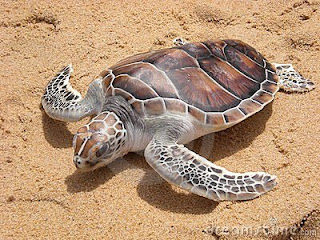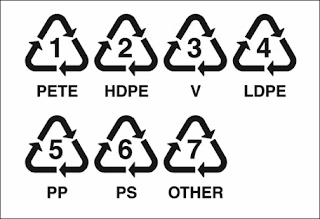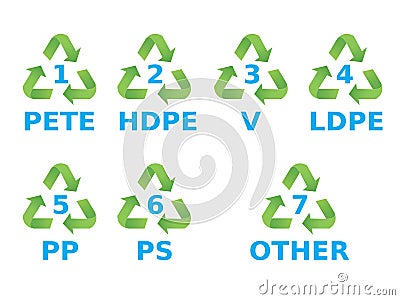
We hope you all have a great Easter break. Thank you for all you hard work in our production of Ocean Commotion.
Click here for your Easter homework link.

 Plastic bags are used everyday to carry home shopping. When they are finished with they end up as rubbish in our bins. Also some rubbish is carelessly dumped by road sides or in fields or beaches. This causes bags left on beaches to end up in the sea. Plastic bags cause marine pollution. Plastic bags are made from oil and take hundreds of years to decompose.
Plastic bags are used everyday to carry home shopping. When they are finished with they end up as rubbish in our bins. Also some rubbish is carelessly dumped by road sides or in fields or beaches. This causes bags left on beaches to end up in the sea. Plastic bags cause marine pollution. Plastic bags are made from oil and take hundreds of years to decompose. Plastic bags are used every day to carry home shopping which results in them ending up in our bins. Rubbish is taken to land fill sites. This causes it to go in the sea and harm fish. Some rubbish is carelessly dumped by roadsides, in fields or on beaches. The results is bags left on beaches end up in the sea. Plastic bags cause Marine pollution because they are made from oil which means they take hundreds of years to decompose.
Plastic bags are used every day to carry home shopping which results in them ending up in our bins. Rubbish is taken to land fill sites. This causes it to go in the sea and harm fish. Some rubbish is carelessly dumped by roadsides, in fields or on beaches. The results is bags left on beaches end up in the sea. Plastic bags cause Marine pollution because they are made from oil which means they take hundreds of years to decompose.

 First of all plastic bags are used everyday to carry home shopping so when they are finished with they end up as rubbish in our bins. Second our rubbish is taken to landfill sites which causes pollution. Next ocean currents carry plastic bags into feeding grounds because bags are left on the beach. Plastic bags are made from oil. Finally plastic bags cause marine pollution.
First of all plastic bags are used everyday to carry home shopping so when they are finished with they end up as rubbish in our bins. Second our rubbish is taken to landfill sites which causes pollution. Next ocean currents carry plastic bags into feeding grounds because bags are left on the beach. Plastic bags are made from oil. Finally plastic bags cause marine pollution.
 Plastic bags are used every day to carry home shopping so that when they are finished with them they end up as rubbish in our bins. Some rubbish is carelessly dumped by roadsides in fields or on beaches however some rubbish is taken to landfill sites. Bags left on beaches end up in the sea which causes plastic bags to cause marine pollution. Plastic bags are made from oil. This causes plastic bags to take hundreds of years to decompose.
Plastic bags are used every day to carry home shopping so that when they are finished with them they end up as rubbish in our bins. Some rubbish is carelessly dumped by roadsides in fields or on beaches however some rubbish is taken to landfill sites. Bags left on beaches end up in the sea which causes plastic bags to cause marine pollution. Plastic bags are made from oil. This causes plastic bags to take hundreds of years to decompose.

 Do you know what happens to your plastic bags when you have finished with them? Plastic bags are made from oil ,which is a natural resource, and they take hundreds of years to decompose (break down and disintergrate). Sea pollution is caused by people ditching rubish on beaches and then getting pulled into the sea by ocean currents. To stop causing pollution you could recycle, reuse or reduce plastic instead of throwing it onto beaches!
Do you know what happens to your plastic bags when you have finished with them? Plastic bags are made from oil ,which is a natural resource, and they take hundreds of years to decompose (break down and disintergrate). Sea pollution is caused by people ditching rubish on beaches and then getting pulled into the sea by ocean currents. To stop causing pollution you could recycle, reuse or reduce plastic instead of throwing it onto beaches! Do you know what happens to you're plastic bags when you have finished with them?Did you have any idea that plastic bags are made from oil therefore take hundreds of years to decompose (break down and fall to bits). Plastic bags are used every day to carry home shopping. When they are finished with they they end up as rubbish in are bins. Afterwards it gets taken to a land fill sights (a place where all you're rubbish goes) but unfortunately some plastic bags get left on beaches and up in the sea which causes a problem for marine life(life under the sea).
Do you know what happens to you're plastic bags when you have finished with them?Did you have any idea that plastic bags are made from oil therefore take hundreds of years to decompose (break down and fall to bits). Plastic bags are used every day to carry home shopping. When they are finished with they they end up as rubbish in are bins. Afterwards it gets taken to a land fill sights (a place where all you're rubbish goes) but unfortunately some plastic bags get left on beaches and up in the sea which causes a problem for marine life(life under the sea). Where do your plastic bags end up when they are out of use? Have you ever wondered what plastic are made from? They're made from oil, a natural resource, which takes hundreds of years to decompose (break down and disintagrate). The plastic bags cause problems for marine life (sea life/creatures) especially leatherback turtles.
Where do your plastic bags end up when they are out of use? Have you ever wondered what plastic are made from? They're made from oil, a natural resource, which takes hundreds of years to decompose (break down and disintagrate). The plastic bags cause problems for marine life (sea life/creatures) especially leatherback turtles.  What happens to your plastic bags when you have finished with them? Plastic bags take hundreds of years to decompose because they are made from oil. Bags left on beaches end up in the sea and ocean currents carry them to feeding grounds.
What happens to your plastic bags when you have finished with them? Plastic bags take hundreds of years to decompose because they are made from oil. Bags left on beaches end up in the sea and ocean currents carry them to feeding grounds. Do you ever wonder what happens to your plastic bags when you have finished with them? Plastic bags are made from oil, a natural resource, which is why they take hundreds of years to decompose(break down and disintegrate).
Do you ever wonder what happens to your plastic bags when you have finished with them? Plastic bags are made from oil, a natural resource, which is why they take hundreds of years to decompose(break down and disintegrate).
 Plastic bags are used every day to carry home shopping. When they are finished with they end up in our rubbish bin which is taken to landfill sites. Some rubbish is carelessly dumped by roadsides, in fields or on beaches which results in the bags ending up in the sea. Plastic bags cause marine pollution (rubbish in the sea). Plastic bags are made from oil. This is why it takes hundreds of years to decompose (dissolve).
Plastic bags are used every day to carry home shopping. When they are finished with they end up in our rubbish bin which is taken to landfill sites. Some rubbish is carelessly dumped by roadsides, in fields or on beaches which results in the bags ending up in the sea. Plastic bags cause marine pollution (rubbish in the sea). Plastic bags are made from oil. This is why it takes hundreds of years to decompose (dissolve).  Have you ever wondered what happens to your plastic bags when you have finished with them? Before you are finished with plastic bags people use them to carry home shopping but when the plastic bags are finished with they end up as rubbish in our bins or they are put into a landfill site (rubbish dump). Plastic bags are made out of oil,a natural resource,which in the water takes HUNDREDS of years to decompose(dissolve or disintegrate)
Have you ever wondered what happens to your plastic bags when you have finished with them? Before you are finished with plastic bags people use them to carry home shopping but when the plastic bags are finished with they end up as rubbish in our bins or they are put into a landfill site (rubbish dump). Plastic bags are made out of oil,a natural resource,which in the water takes HUNDREDS of years to decompose(dissolve or disintegrate) What happens to our plastic bags after we have carelessly dumped them by the roadside?
What happens to our plastic bags after we have carelessly dumped them by the roadside? Plastic Bags are used to carry home shopping. When they are finished with they end up in our rubbish bins which is taken to the landfill sites. Some rubbish is carelessly dumped by roadsides in fields or on beaches and ends up in the sea.
Plastic Bags are used to carry home shopping. When they are finished with they end up in our rubbish bins which is taken to the landfill sites. Some rubbish is carelessly dumped by roadsides in fields or on beaches and ends up in the sea. What happens to your plastic bags when you are finished with them? Plastic bags take hundreds of years to decompose because they are made from oil, a natural resource. They cause marine pollution (rubbish in the sea) and damage sea life. Some of our rubbish is carelessly dumped by roadsides and on beaches which could end up in the sea.
What happens to your plastic bags when you are finished with them? Plastic bags take hundreds of years to decompose because they are made from oil, a natural resource. They cause marine pollution (rubbish in the sea) and damage sea life. Some of our rubbish is carelessly dumped by roadsides and on beaches which could end up in the sea.
